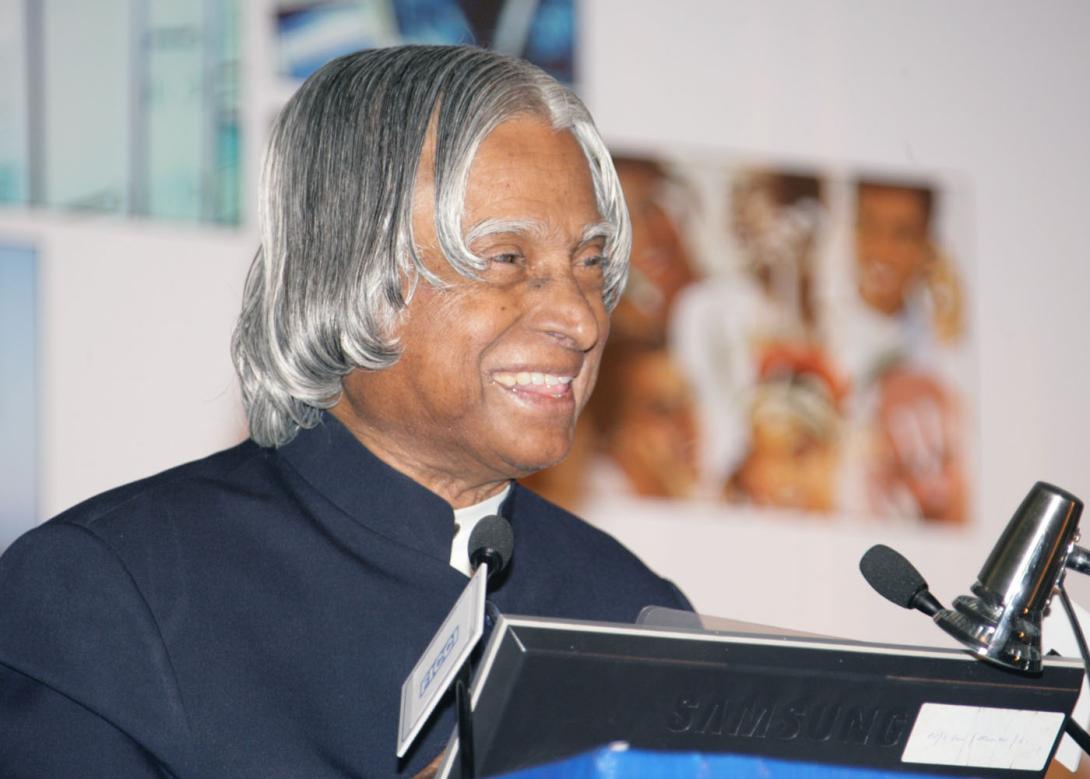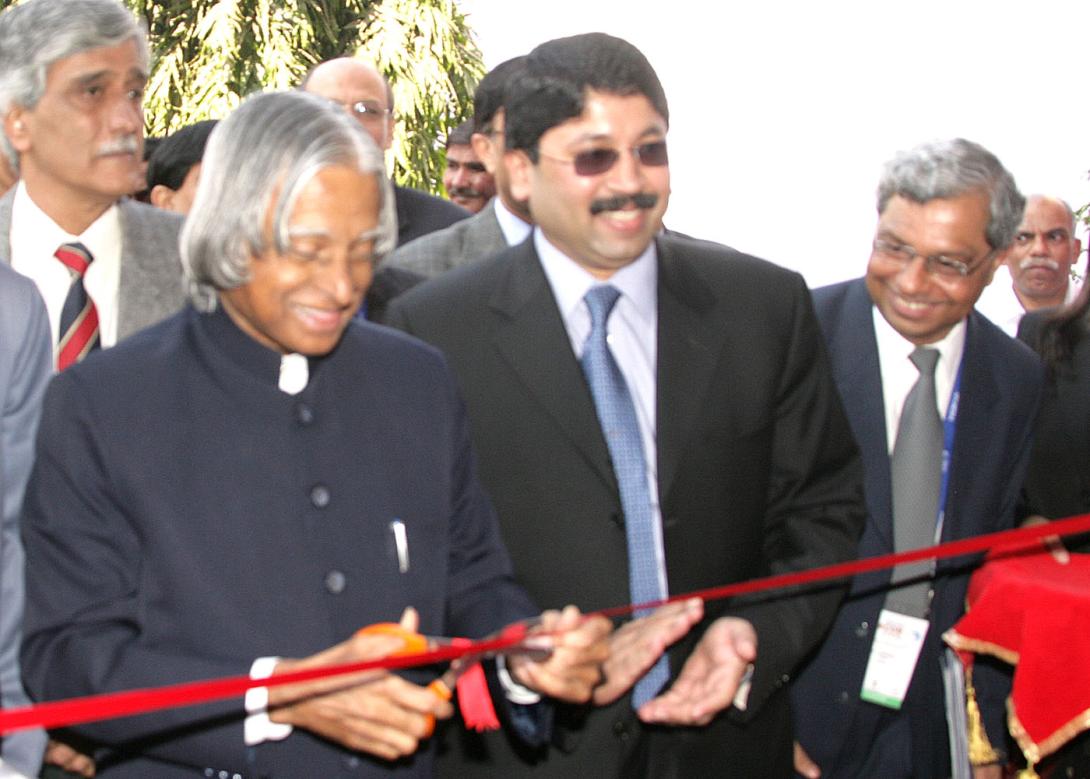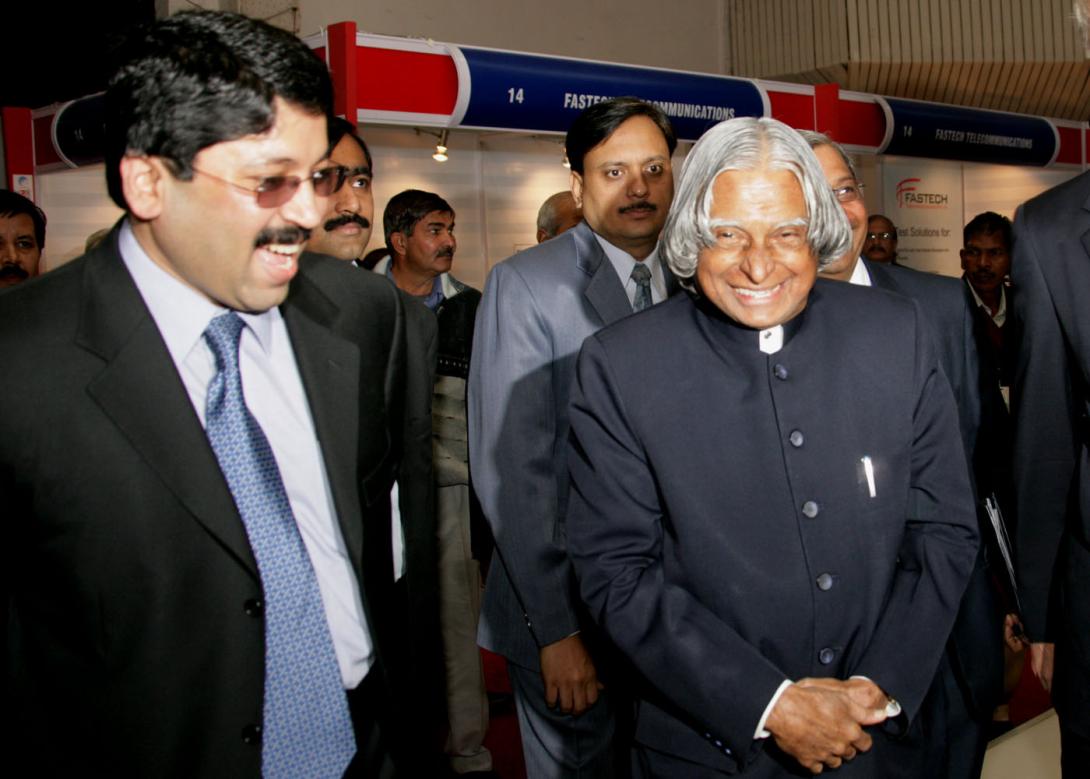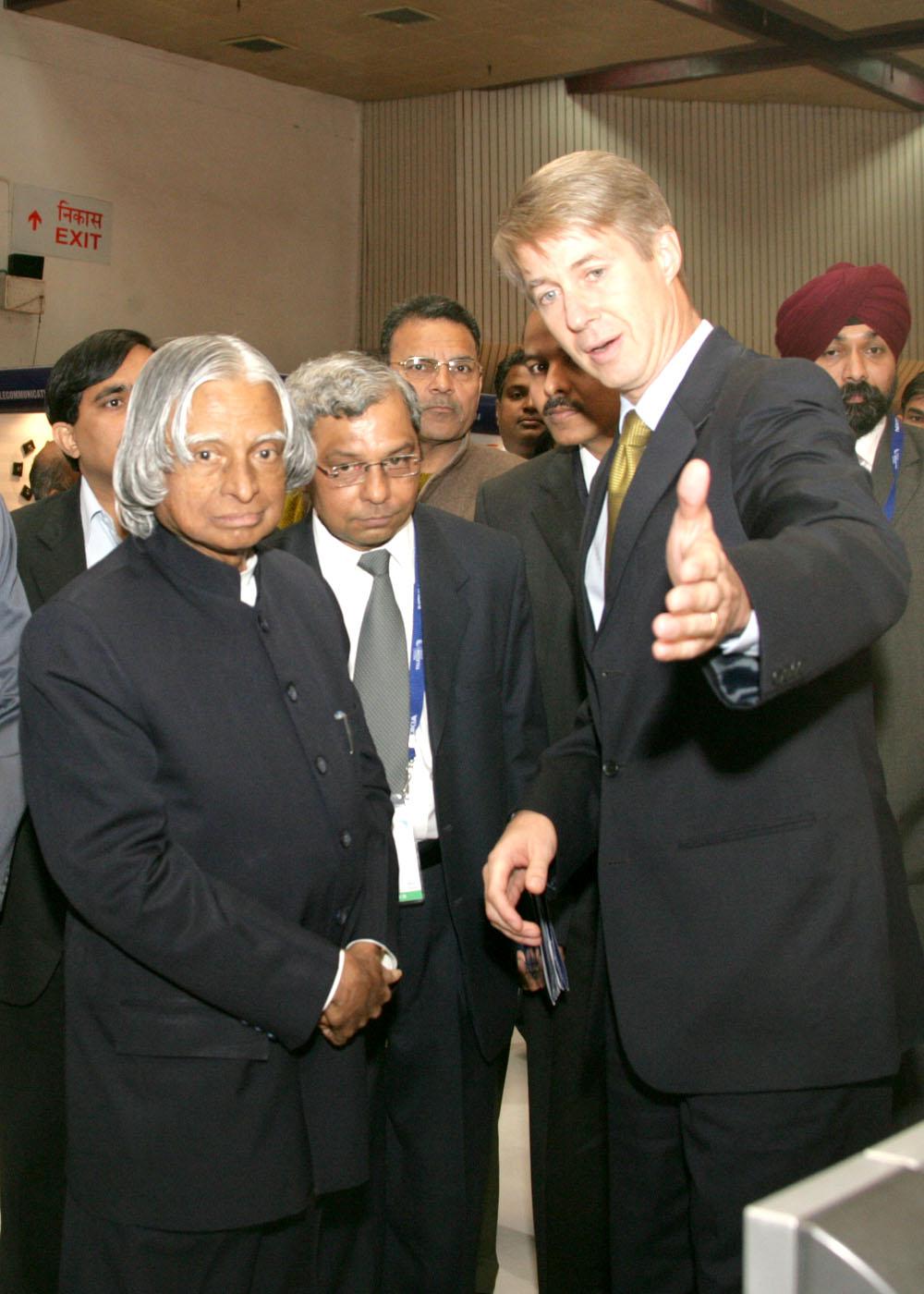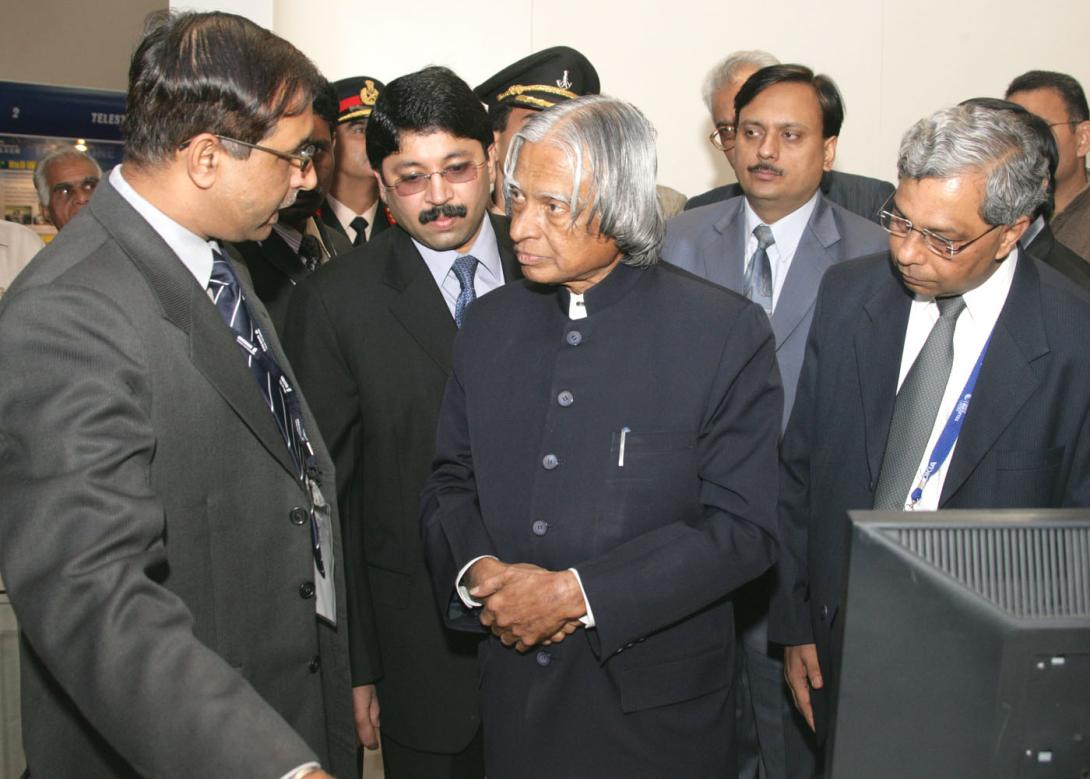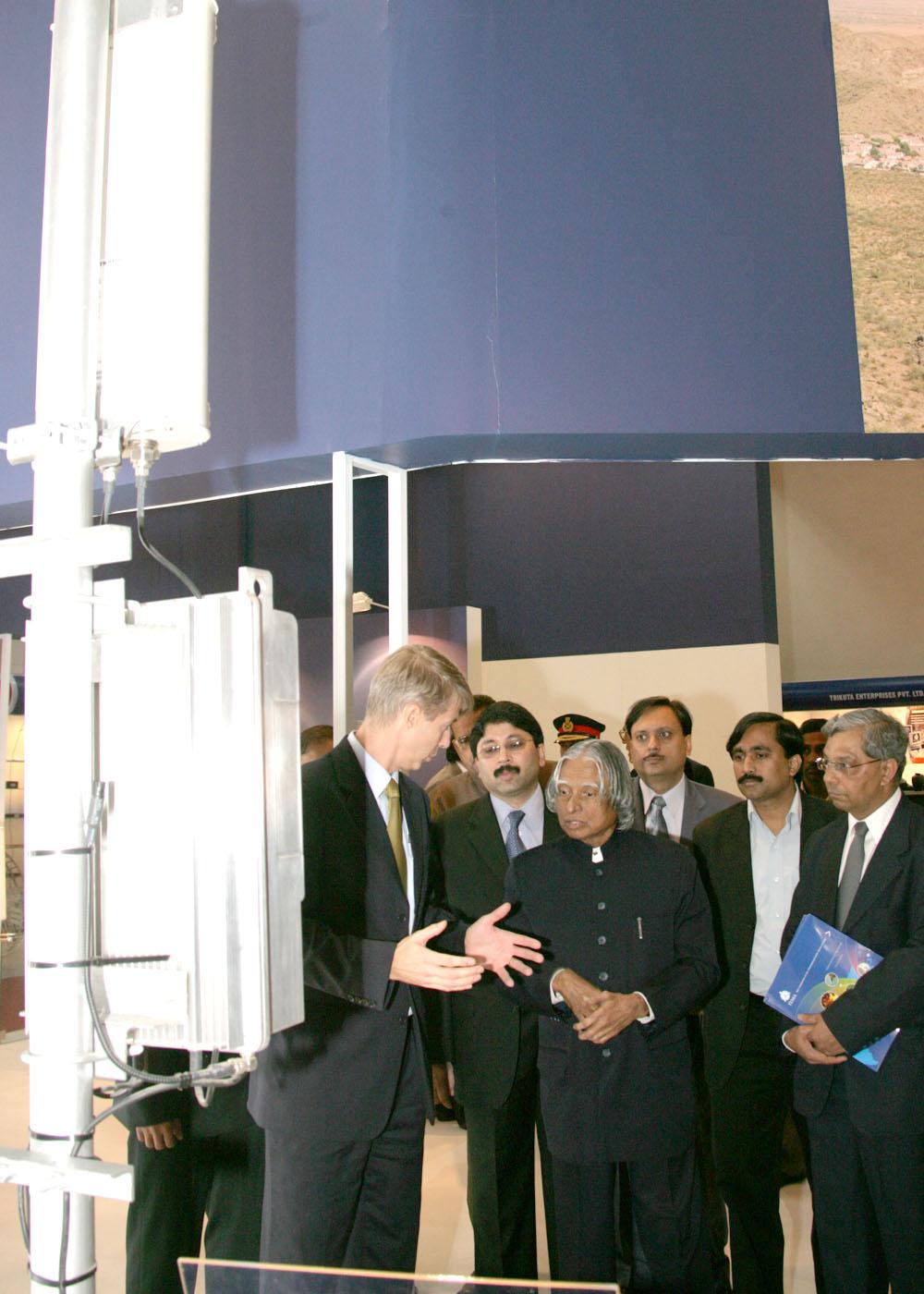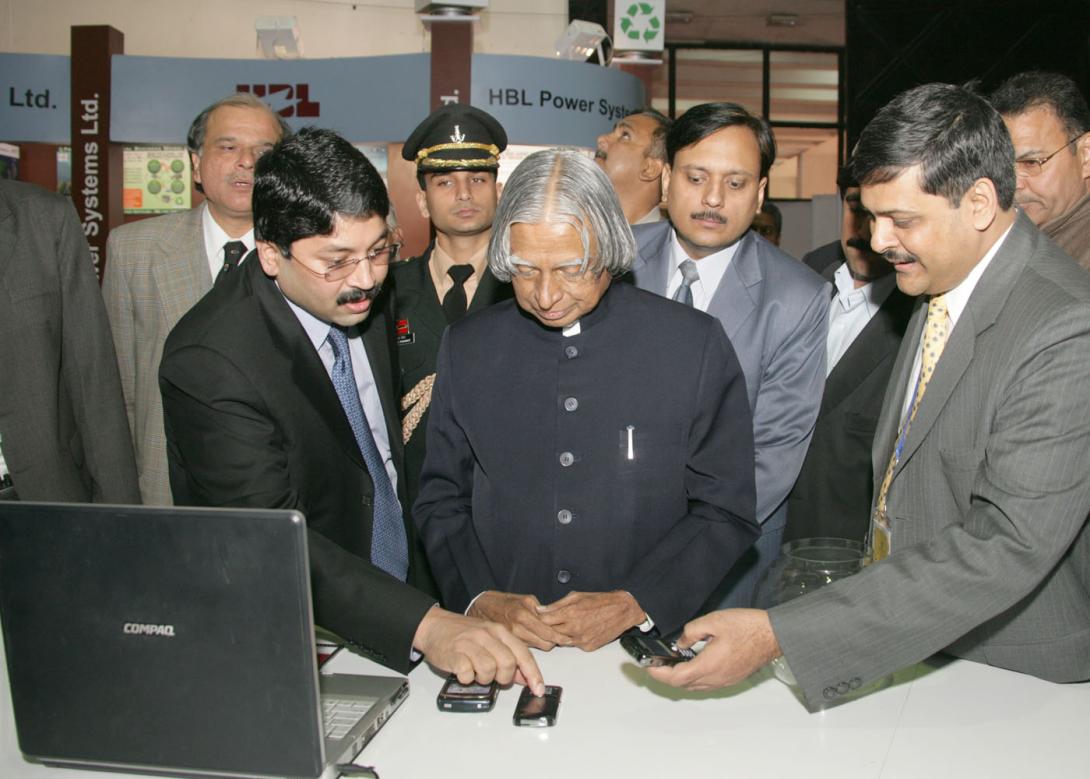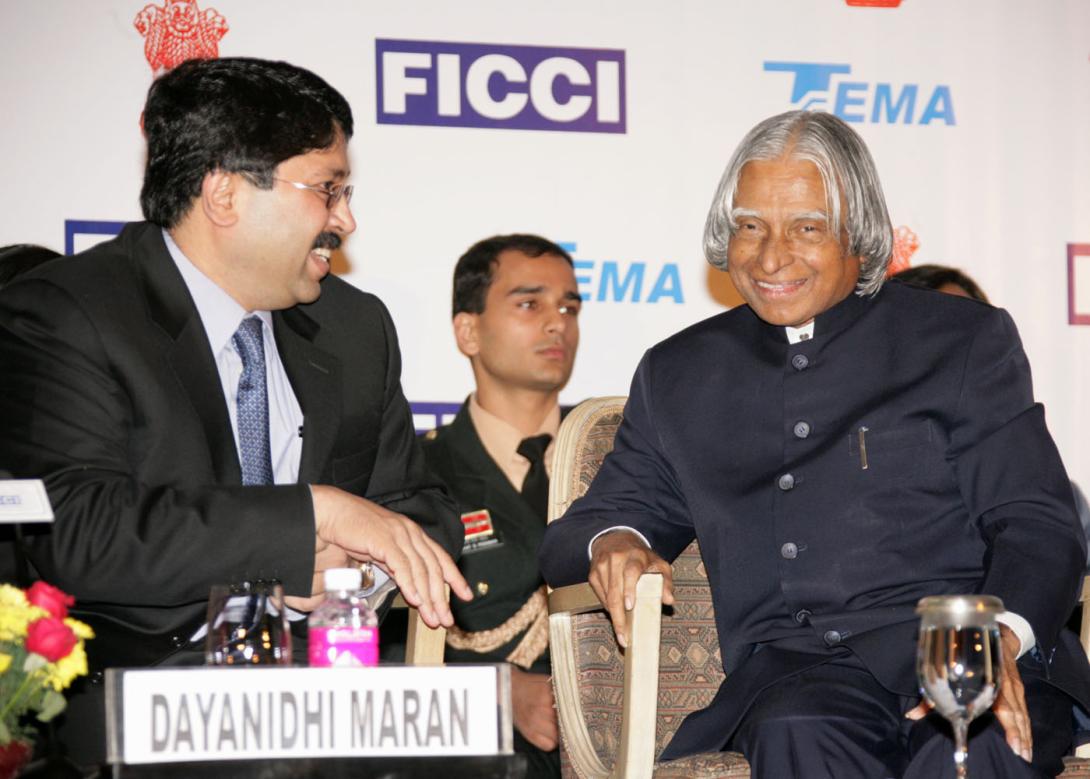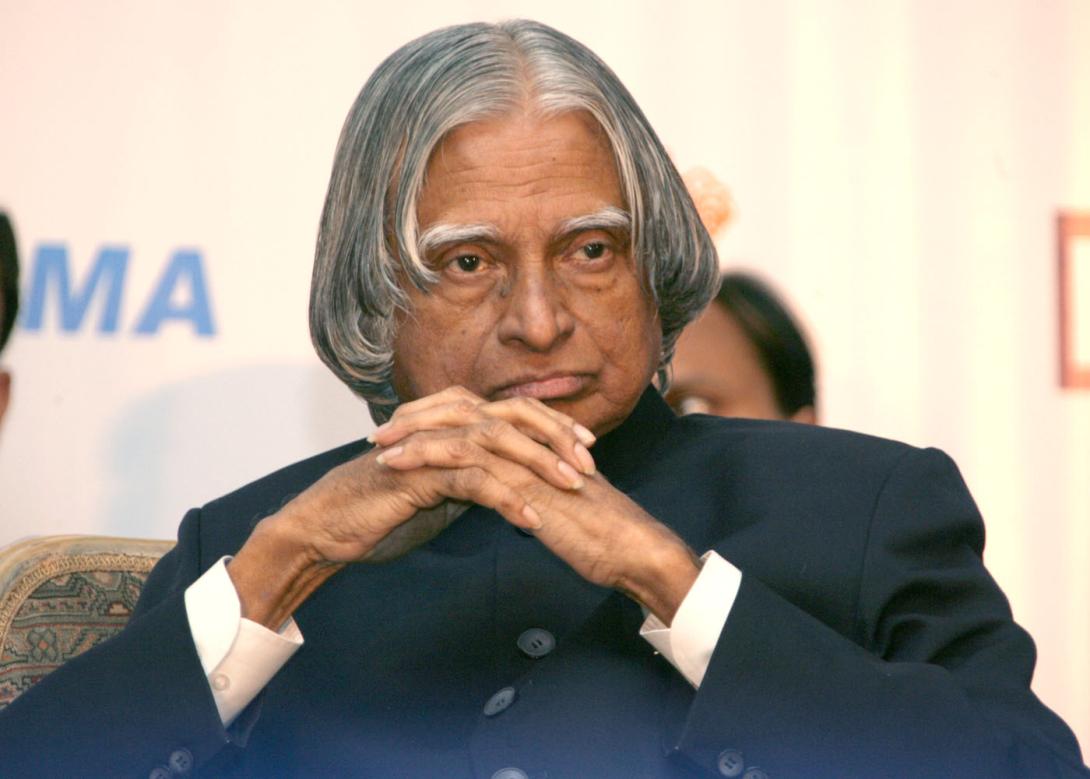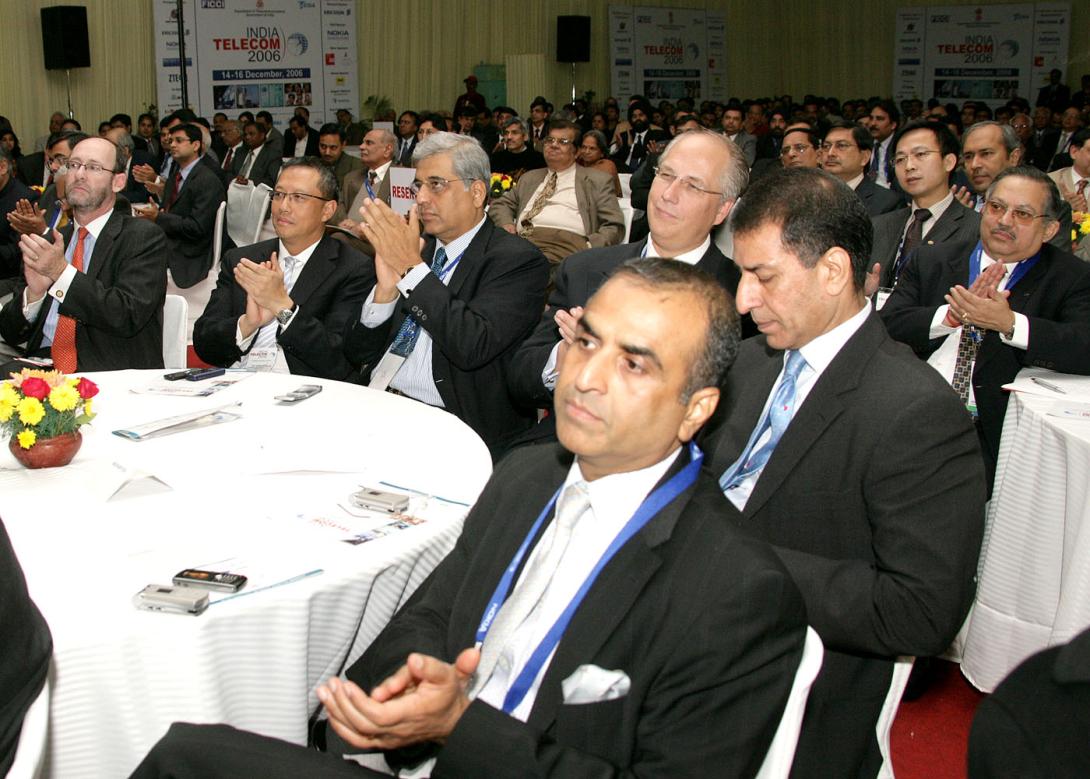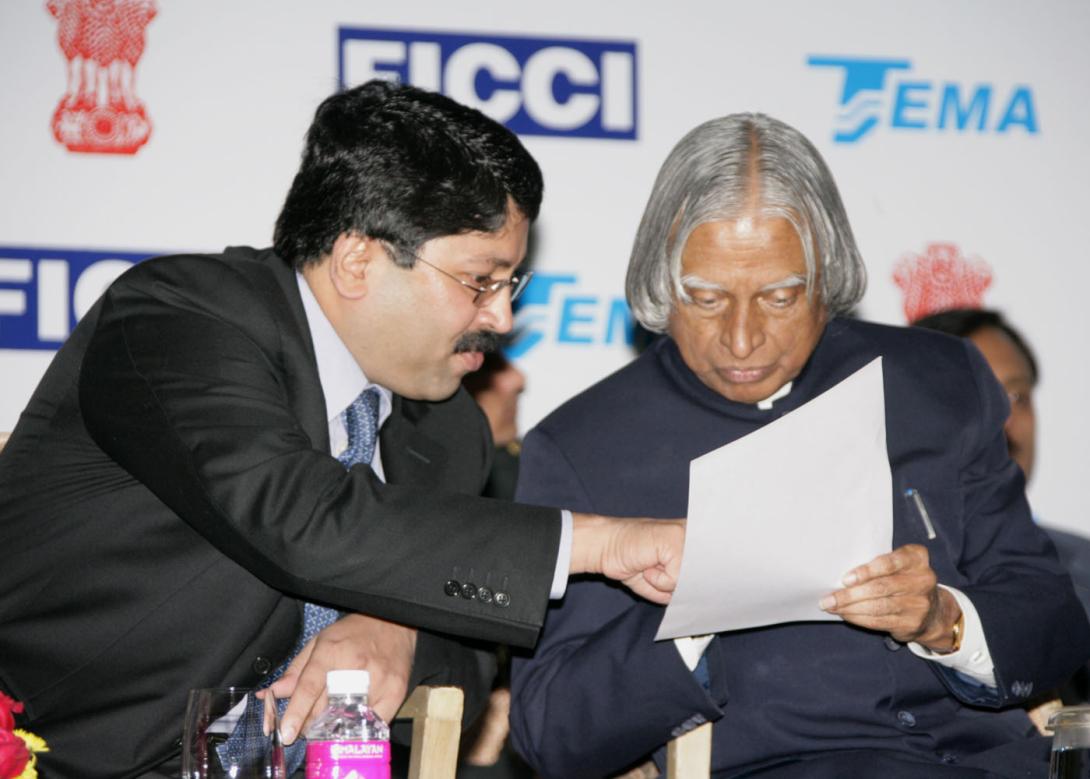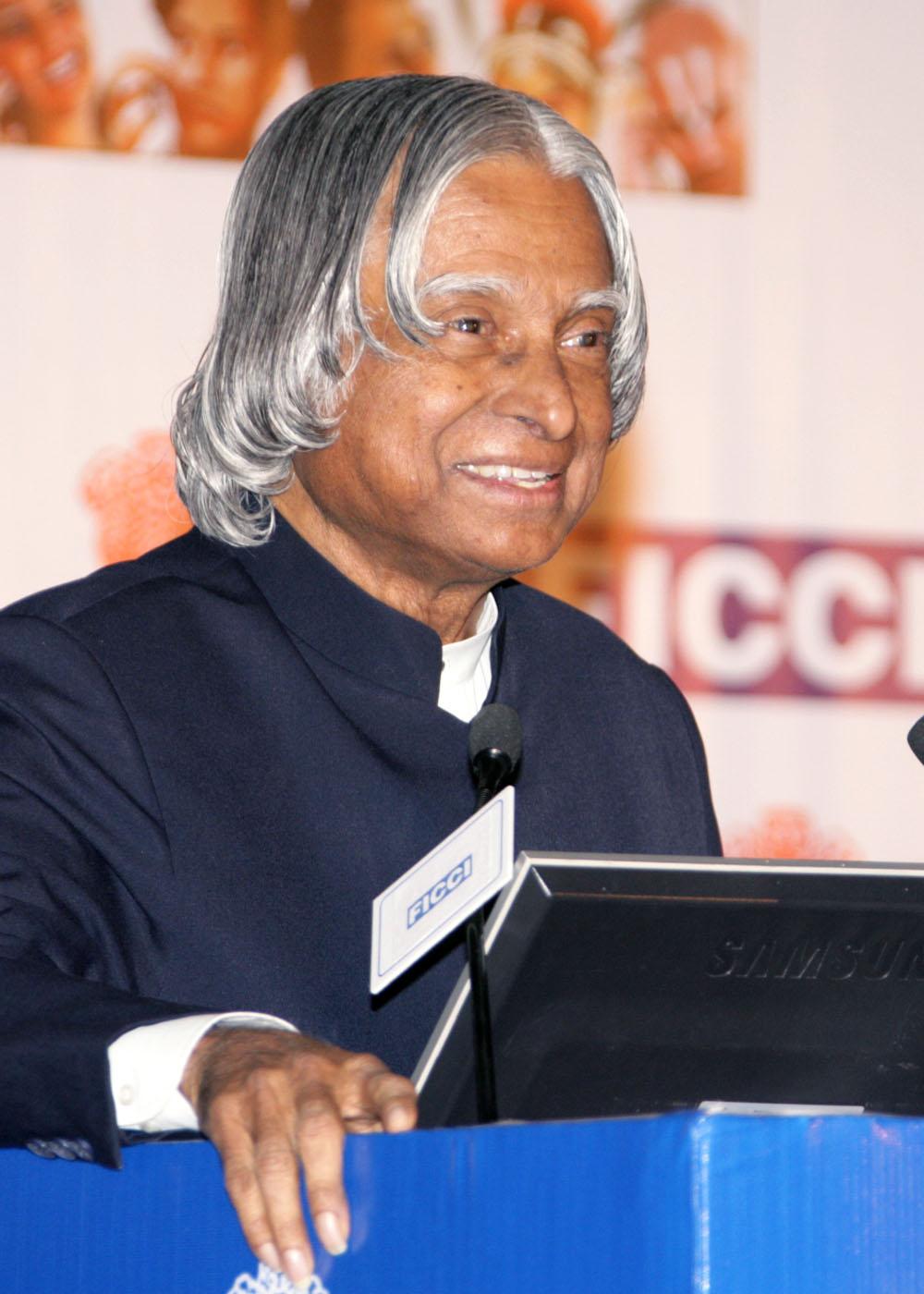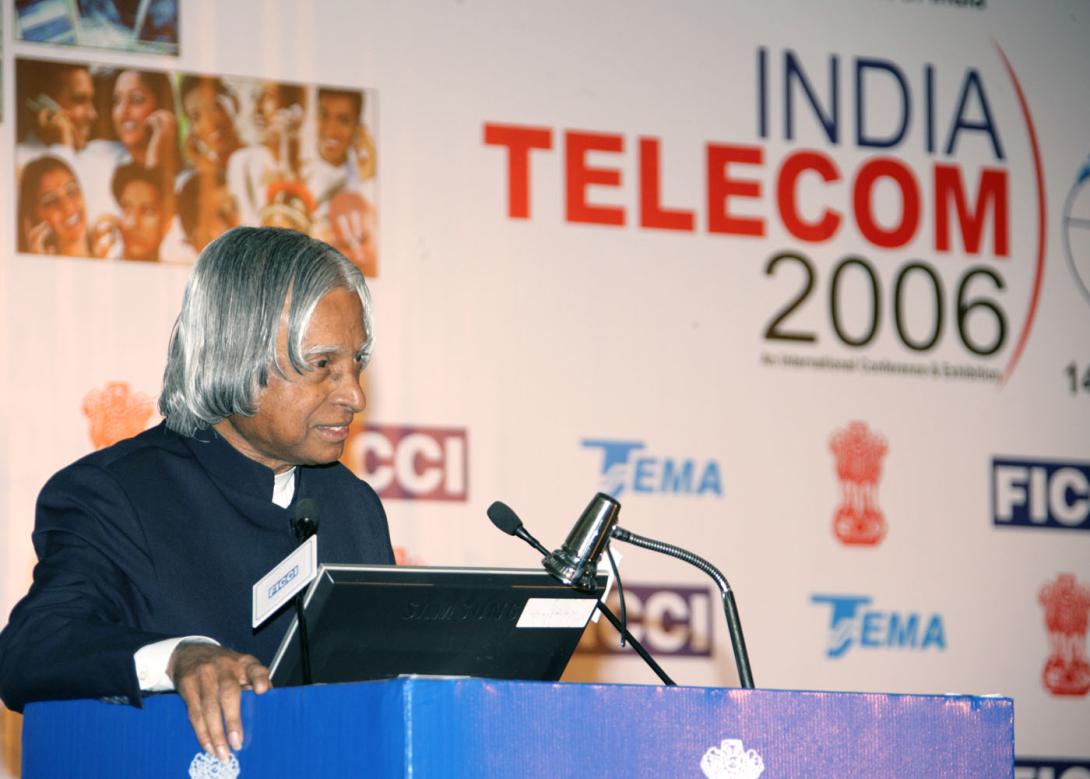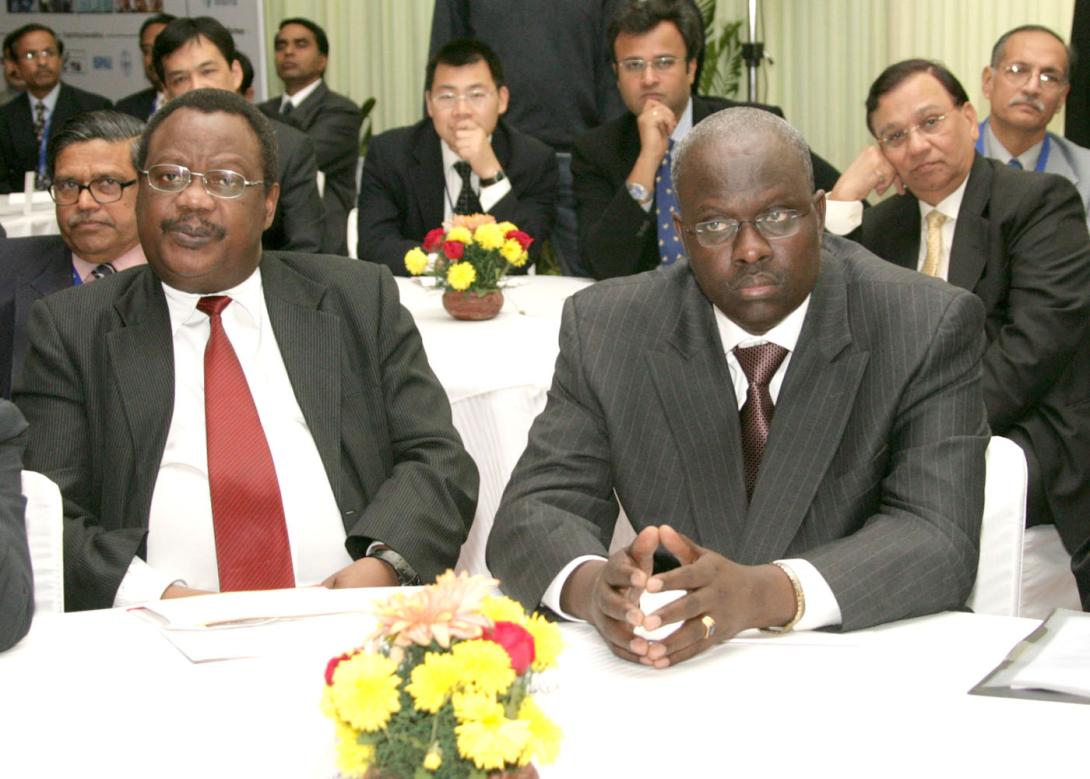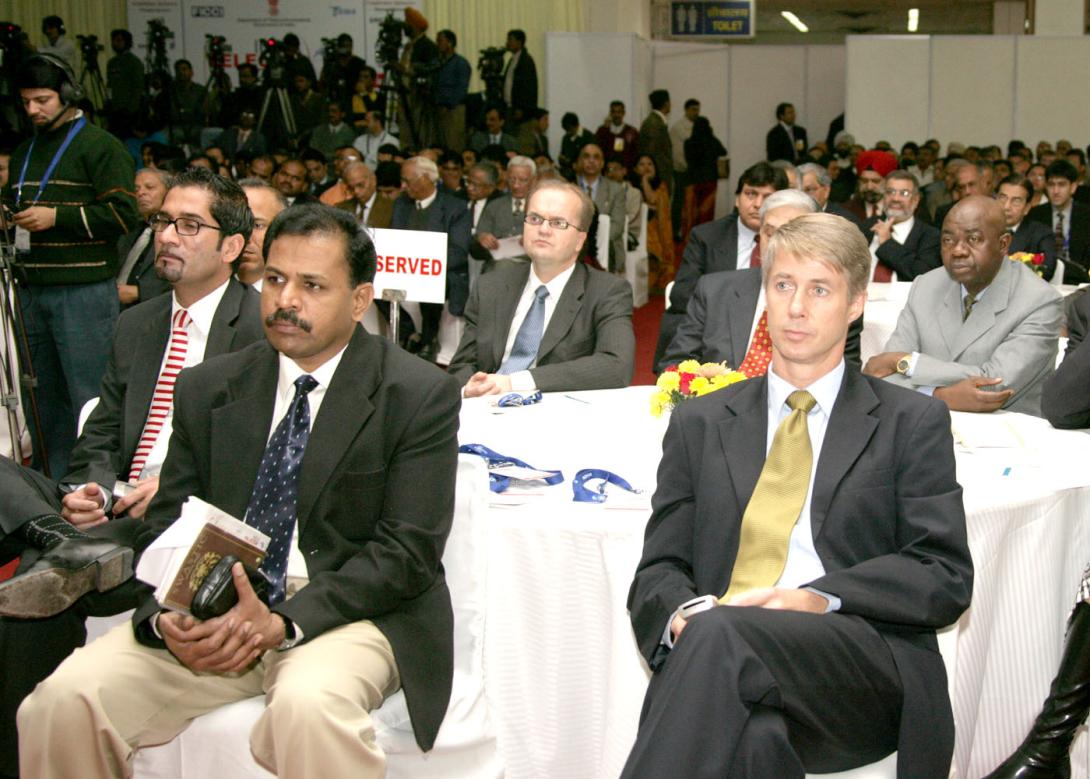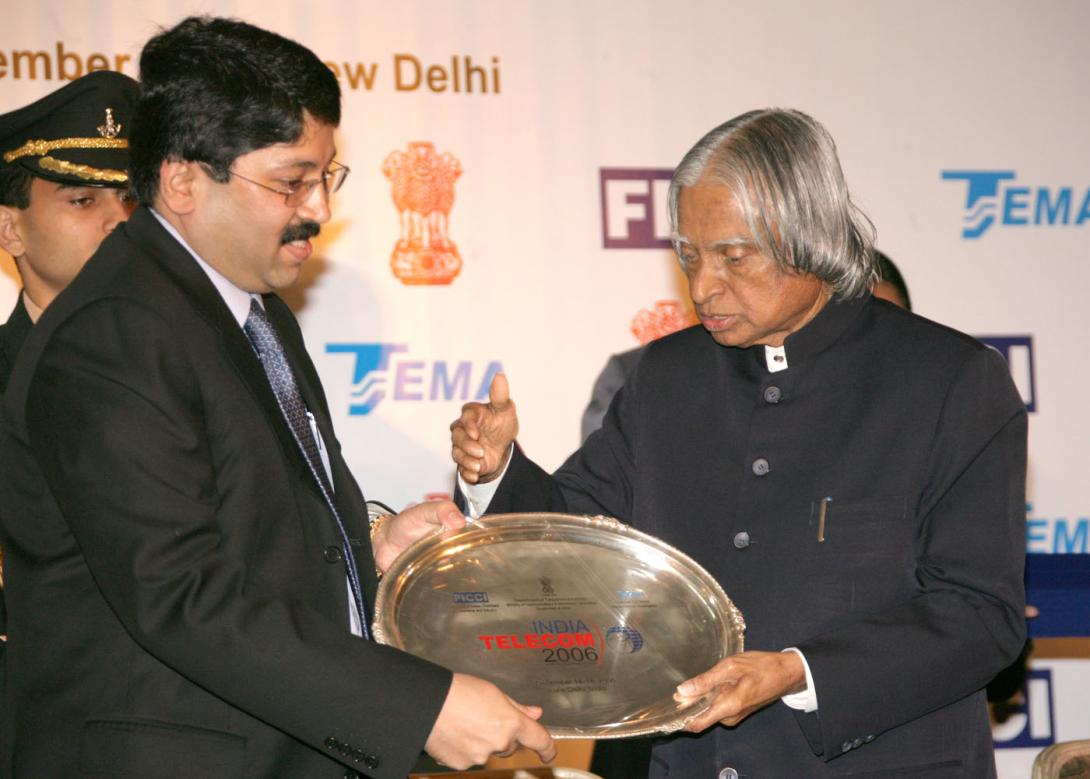Address at the Inauguration of 'india Telecom 2006 - Mapping the Road Ahead', New Delhi
New Delhi : 14-12-2006
Connectivity for Billion People
Electronic connectivity
Empowers the nation?
I am indeed delighted to participate in the ?India Telecom 2006 ? Mapping the Road Ahead? organized by the Department of Telecommunication, Federation of Indian Chamber of Commerce and Industry and Telecom Equipment Manufacturers Association. My greetings to the organizers, and related planners, collaborators, manufacturers, solution providers, service providers, researchers, specialists, regulatory authorities, educationists, students and other participants. Above all, I would like to congratulate the users of telecom systems for innovative applications and overwhelming enthusiasm to utilize the available infrastructure in the most efficient manner. Indian users have earned us the distinction as a country with the fast growing broadband market in the world during 2006. I would like to share some thoughts on the topic ?Connectivity for Billion People?
Enabling billions to communicate
Out of the billion population in India, 70% live in six hundred thousand villages. We need societal transformation and sustainable development for growth. Telecom could contribute significantly to the societal transformation particularly in the rural areas by enabling our people to communicate and reap benefits. Till recently, benefits of telecom revolution touched mainly the cities and towns. Now it is time for the telecom growth to penetrate into the rural sector to democratize access and bring happiness and prosperity, overcoming all geographical barriers.
Broadband Economy
Four of the top ten broadband economies of the world are in Asia. South Korea, Hong Kong, Taiwan and Singapore have the distinction of achieving highest broadband household digital connectivity index of 80% to 60%. India is lagging far behind with very few households being digitally connected. It appears that the above four Asian countries have excelled and grown faster than the rest of the world because of significant utilization of local languages in the generation of software and content on the internet. Herein there is a significant message. Large scale utilization of local languages will enable people to create content with ease and authenticity which, when shared, will have a positive effect in the growth of economy through the benefits of telecom revolution and related Internet and multimedia tools. The Indian E-Governance and E-Commerce initiatives should become the drivers for the rural population to seek information in their local language and thus give a push to telecom penetration in the rural areas.
World Information Society day
As you all know, May 17 was being celebrated as the World Telecom Day. This year, May 17 was renamed as World Information Society Day, emphasizing the importance of telecom in the growth of information technology and people, particularly those who have not yet reaped the benefits of telecom revolution in a befitting manner. I would suggest the organizers of this meet to take a note of this dynamics in the telecom sector as a whole.
Bandwidth as the bridge for prosperity
The world over, in the past few decades research and development has been focusing on increasing the bandwidth carried by copper and fiber optic cables and wireless medium without having to change the old cables and infrastructure. The Copper cables that carried a few kilo bits when they were first introduced today can carry megabits of information as a consequence of the digital revolution. The fiber optic cables that carried a few megabits initially today can carry several terabits of information with the introduction of Dense Wavelength Division Multiplexing (DWDM). Similar are the trends in wireless communication. Because of this exponential and disruptive growth in the bandwidth, we have reached a stage where bandwidth has become abundant and one can claim that distance has died. The world has not only become flat but has shrunk.
Bandwidth is the bridge for prosperity
The bandwidth is the demolisher of imbalances and a great leveler in the knowledge society. Making the bandwidth available is like the Government laying the roads. Movement of materials through these roads creates wealth in the industrial economy and the government recovers more than the investment on the roads by way taxes and enhanced prosperity of its people. In the modern digital economy driven by knowledge products, bits and bytes traverse the network and create wealth and this will recover the cost of investments in the bandwidth. Thus a singular action of making the bandwidth available to all our people will bridge the perceived divide. The free bandwidth will make an economic sense if we cost the services offered using the bandwidth. We have the fiber infrastructure ready up to block level, last mile wireless technologies are being implemented and the VSAT technologies for the unreachable are in place in the form of EDUSAT and other Satellite services. Hence, we are well on our path to bridge the gap.
The more educated one is, the less bandwidth would be used for communication. For example, many of us may communicate very easily by an asynchronous text based email system, which requires the least bandwidth. Lesser endowed persons may require slightly higher bandwidth like for example synchronous voice communication. A person who is less informed may require the high bandwidth video conferencing system. In case, we are trying to be inclusive, making the bandwidth available on demand in an unhindered way to the rural areas would be the first action required.
Convergence in Smart devices:
Data traffic will soon exceed voice traffic, so much so that voice and data would merge to such an extent that independent reference to voice as a communication mode may not be relevant. India and its people should leap frog, jumping to the most efficient, most cost effective and most useful tools and technologies at the earliest opportunity.
Today?s cell phone epitomizes the convergence of many applications. For example, the cell phone today can be used as a simple phone for voice, has the storage for address book, it is camera, it can be used for exchanging and viewing video, it can be used to browse the web and download data and email, it is multilingual, it can be sued as an MP3 music player and as a radio and above all it can be used as an authentication mechanism for mobile e-commerce and banking. It can understand speech and record conversations, text and video. This convergent device is becoming smarter by the day and soon would be able to understand even gestures and would present a natural interface to interact almost in a human like fashion.
The networks are also becoming smarter and this has made the distinction between various service providers thin. For example, the cable TV operators offer telephony and internet services and the Internet service providers are making forays into the world of entertainment.
The telecom is no longer the monopoly of the Government and today we see many strong private players present. The Ministry of Communication and Information Technology and the TRAI together have taken many steps that would make the telecom and hence the access to information and opportunities in knowledge creation becomes ever-present and equitable touching every one both in rural and urban India. I would like to congratulate both the Minister and his team and also the TRAI for being part of the Developed India dream. We should become the first nation to have the fiber to every home and become unwired bypassing the copper and become a society on the move with wireless broadband as the last mile and be the hot spot for development of wireless 4G.
With these steps, India has the potential to become the fastest growing knowledge society. Telecom, knowledge content and connectivity are the key elements to realize this goal. Connecting a billion people throws up multiple challenges.
The Challenges
a. Infrastructure programme: While there is an all round development in telecom that will become a great reality in India, there are two important areas that should not be neglected particularly in a country like India. India is perhaps the only developing country which has very mature agriculture sector, and space, defence and atomic energy programmes. We can today launch any satellite in any orbit, deliver any payload to the needed region in the world and soon can become self sufficient in energy. The country?s vibrancy in manufacture, research and development should be fully used to make India truly self sufficient in telecom. The number of cell phones and access devices, routers, switches and modems that this country would need that too in a continuously replenishable fashion is incentive enough to start a strong manufacturing program in telecom. We should project a goal of 70-30 by which more than 70 % of the telecom hardware and software should be manufactured in India by 2010.
b. Value-added services: The great opportunity in telecom is in innovating value added services that run on the telecom infrastructure. With the inherent strength of the nation in software, this should be easy to do provided we concentrate our energies in this direction. This is also a fertile ground for incubating many small starts up companies and this will be a second silicon valley ? just the same way the Internet spurred the revolution, today the wireless and the telecom can stir another. This will be a unique experience of India.
Societal transformation
Societal transformation and economic growth are closely interlinked. Information society with innovation as focus, transform into knowledge society. This, in turn gives positive impacts in agricultural society and industrial society. The whole purpose of education in a country is to develop and enhance the potential of our human resource and progressively transform into a knowledge society where telecom plays an important role. The knowledge society will be a society producing, marketing and using products and services that are rich in both explicit and tacit knowledge, thus creating value added products for national and international consumption. The real capital of this knowledge society will be its knowledge components which again come from telecom. The society will be highly networked to create knowledge intensive environment along with enabling process to efficiently create, share, use and protect knowledge. Our education system should re-align itself at the earliest to meet the needs of the present day challenges and be fully geared to participate in the societal transformation.
Changing Pattern of Society
When the world was moving from the industrial to information and knowledge era, we witnessed a changing pattern in the sectoral share of GDP and the number of people employed in each sector. The sectoral share of Gross Domestic Product (GDP) percentage has undergone a change. Contribution of agriculture to India?s GDP has reduced from 39% to 22% during the period 1979 to 2006. During the same period, contribution of manufacturing sector has moved from 24% to 27%; whereas the contribution from services sector has increased from 37% to 51% largely because of telecom revolution. There has been considerable change in the employment pattern also. The percentage of people employed in agriculture has come down from 64% to 54%. Simultaneously, the percentage of people employed in manufacturing has gone up from 15% to 19% and in the service sector from 20% to 27%, again which is because of the impact of telecom revolution. This trend has to continue and by 2020 our employment pattern should aim at 44% in agriculture, 21% in manufacturing and 35% in service sectors.
The displacement of 10% people from agriculture sector has to be facilitated through skill enabling for undertaking value-added tasks in the rural enterprises resulting in a self-sustained rural economy. PURA (Providing Urban Amenities in Rural Areas) facilitates creation of employment in the rural areas itself. PURA achieves this by providing physical, electronic and knowledge connectivities to a cluster of villages thereby leading to their economic connectivity and prosperity. Knowledge creation and knowledge utilization is the key to the success of a PURA programme.
Characteristics of the Knowledge economy
I was studying different dimensions of knowledge society; how will it be different from the Industrial Economy. In the knowledge economy, the objective of a society changes from fulfilling the basic needs of all round development to empowerment. The education system instead of going by text book teaching will be promoted by creative, interactive self learning ? formal and informal with focus on values, merit and quality. The workers instead of being skilled or semi-skilled will be knowledgeable, self empowered and flexibly skilled. The type of work instead of being structured and hardware driven will be less structured and software driven. Management style will be delegative rather than being directive. Impact on environment and ecology will be strikingly less compared to industrial economy. Finally, the economy will be knowledge driven. The key infrastructure required for this is that of telecom and all related tools of communications, computers and software.
Empowerment through Connectivity
The core of empowerment for prosperity of one billion people is the connectivity and partnership between governmental and multiple institutions in the public and private domains. The fast growing telecom economy and infrastructure have to be the primary contributors towards this. The strength of this partnership for collaborative growth and economic prosperity is facilitated by free flow of knowledge and information in a seamless manner cutting across levels and boundaries embracing all walks of life in the three sectors of the economy such as agriculture, manufacturing and services. The communication must be possible from everywhere to anywhere at any time.
The inter-connectivity between these three sectors of the economy can be brought about by a societal grid which has a Knowledge Grid, the Rural (Seven thousand PURA) Grid, Health Grid and the Governance Grid. Each grid is a system of multiple portals. This system of grids will bring prosperity to 700 million people in the rural areas and 300 million plus people in the urban areas. In the process, it will aim to uplift the quality of lives of 220 million people out of one billion plus people.
Knowledge Grid
India is now in the process of creating virtual educational institutions for knowledge sharing, knowledge dissemination and knowledge reuse. While it is known that the virtual institutions provide us with technologies of the future and the most economic way of scaling high quality education in the country, they are no substitute to the campus based education. The challenge before the educational institutions is to provide the best of breed of both the worlds.
The three phases of learning are the lectures, library and laboratories. They require increasing bandwidth from a few 100?s of kilobytes for the lectures to a few megabytes for the formal digital libraries and the informal world of knowledge from the Internet, to gigabits of connectivity for remote laboratories in the world of high precision science and engineering. As the bandwidth becomes cheaper and available in abundance, we should be able to run remote instruments and facilities as complex as NMR to Wind tunnels. These are applications that can make a difference in how we engage in teaching, learning, and research in higher education.
Thus, the bandwidth is the demolisher of imbalances and a great leveler in the knowledge society. We have rich knowledge institutions but what we have to add is connectivity. This connectivity today is technologically possible but would need creation of high band width reliable network infrastructure to the extent of minimum 10 Gigabits per second all through the country to provide uniform access of knowledge in different regions leading to the creation of Knowledge GRID.
Health Grid
Indian Space Research Organization through their INSAT network has connected 25 major hospitals in the mainland. From there they are providing telemedicine connectivity to remote areas including our islands. Rashtrapati Bhavan Clinic is also connected to the CARE Hospitals Hyderabad through telemedicine facility. The mission of telemedicine with multiple grids is gaining momentum and it will spread to all the equipped Primary Health Centres in the country, medical colleges and research institutions in a time bound manner.
e-Governance Grid
Rashtrapati Bhavan has introduced connectivity with our citizens, institutions, universities, government departments and multi-lateral agencies during the last four years. For enabling such connectivity, all the important events in which I participate are brought out in the website ( ) immediately after the function. Today, on an average, this website has a hit-rate of over two hundred and fifty thousand per day. On certain special occasion like Independence Day, Republic Day, it touches nearly a million hits. In addition, I receive over 500 e-mails and 500 letters on an average from various people from all over the country and abroad. I also receive 100?s of questions from the students and children every day. We have built in an e-Governance system to study all the correspondence on a day to day basis, analyze, prioritize, verify and determine the action requirements to be taken by Rashtrapati Bhavan and other agencies of government and the relevant institutions both public and private. We have now established a less-paper, dynamic and secured workflow system for the file movements. We have a Fiber broad band POP (Point of Presence) which can connect up to 64 Mbps. We have established within Rashtrapati Bhavan facilities for G2G and G2C connectivity and we are in the process of establishing the high bandwidth broadband VPN connectivity with Central and State Governments and other relevant institutions for seamless flow of information within the existing systems and procedures of Governmental functioning. This will soon become the part of the e-Governance GRID. Similar Grids are required to be developed for connectivity amongst all the institutions in the country. Telecom sector can act as a trigger to achieve this goal in a cost effective manner.
Characteristics of the Rural (Seven thousand PURAs) Grid
For providing the knowledge connectivity to the PURA complexes, Village Knowledge Centers will act as frontline delivery system. I visualize establishment of village knowledge center in the Village Panchayat to empower the villagers with the knowledge and to act as a local center for knowledge connectivity for the villagers within the overall framework of PURA. Village Knowledge Center (VKC): VKC should provide the essential data required for the targeted population such as farmers, fishermen, craftsmen, traders, businessmen, entrepreneurs, unemployed youth and the students. It has to be acquired by visiting the village, talking to the rural people, by understanding their requirement and core competence. Providing meteorological data for both farmers and fishermen has to be area specific, covering say 20 or 30 villages in the vicinity of sea coast or in the farming area. Local relevance of information offered is essential. Users have simple needs of information but often it is a tough problem for system integrators because of the need of updation of data. Trained manpower with experience have to be deployed to generate information which can explain to the people in simple terms the meteorological data, weather data, marketing data on marine products, agricultural and other rural commodities. These data have to come from various connected institutions which provide the service to the people on a timely basis periodically. But the transformation of data into user friendly information on a regular updated basis is the real challenge. The main focus of the Village Knowledge Centre should be to empower the youth to undertake development tasks of the villages and establish the rural enterprises which will provide large scale employment to the youth of the village. So, it is essential to skill enable and knowledge enable through the Academic institutions, industry, banking and marketing institutions. VKC should act as a facilitator. I appreciate the Ministry of Communication and Information Technology efforts in establishing 100,000 Common Services Centers, which I am sure, will become part of PURA knowledge connectivity. Blended knowledge is a better knowledge.
PURA Nodal Knowledge Data Centre
Ministry of Agriculture has established KISAN Call Centre which provides valuable and timely knowledge support to the farmers and fishermen. Similar Domain Service Provider Call centers are required in the field of Commerce and Industry, Entrepreneurial skill Development and employment generation, Travel and Tourism, Banking and Insurance, Meteorological forecasting, Disaster Warning systems, Education and Human Resource Development and Health care.
These call centers will act as a service provider to the PURA Nodal Knowledge Data Centers located in the PURA Complexes, which in turn will provide the area specific and customized knowledge to the Village Knowledge Centers in the villages in a holistic manner. This delivery will depend on the availability of robust connectivity to different parts of the country. This forms the PURA GRIDs which draws information from the other GRIDS and will act as a catalyst for the societal transformation in the rural areas.
Connectivities: Societal GRID
So far we have discussed the connectivities within the various proposed grids, that is, intra-grid connectivities. However, to maximize the synergy between the grids, leading to maximization of GDP and productivity, there is need for inter-grid connectivities, which may be called as Societal Grid. As discussed earlier, Societal Grid consists of:
1. Knowledge GRID ? Inter connecting universities with socio-economic institutions, industries and R&D organizations.
2. Health Care GRID ? Inter-connecting the Health Care institutions of Government, Corporate and Super specialty hospitals. Research institutions, educational institutions and ultimately, Pharma R & D institutions.
3. E-Governance GRID ? Inter-connecting the Central Government and State Governments and District and Block level offices for G2G and G2C connectivity.
4. PURA Knowledge GRID ? Connecting the PURA Nodal centers with the Village knowledge centres and Domain service providers. Since this is the backbone for rural development, all other GRIDs will infuse the knowledge into this GRID for sustainable development, healthcare and good governance.
The societal grid with four other grids as explained will lead to economic integration of the rural and urban population.
Digital divide or digital bridge
While telecom technologies have revolutionized all aspects of society: industry, business, banking, government, judiciary, defence, education, health, agriculture, they have also introduced certain concerns. In the last one and a half centuries of the growth of telecom sector, and the last one century of the growth of wireless technologies, new problems have emerged. Some talk about digital divide and brain drain. We should see the situation positively. Can we convert these problems to digital bridges or digital highways and brain gains? Already some such aspects are visible in the BPOs and even in call centres.
Radio frequency utilization and pollution
There are problems related to excessive utilization of radio or electro magnetic wave frequencies, particularly congestion on popular frequency bands, related electro-magnetic interference or pollution and electro-magnetic radiation hazards. India has adopted some rules and regulations to control the radio spectrum but a lot has yet to be done. Earlier, only radio operators or radar operators were exposed to significant electromagnetic radiation effects, prompting regulators to introduce legislation for location and shielding of human beings from potential hazards. In the recent times, increased use of mobile phones, using high power radiation towers, has brought in suspicion among the users about the harmful effects of electro magnetic waves, particularly for children, senior citizens and people needing healthcare. There is an urgent need to evolve reasonable standards, rules and regulations and legislations for proper use of radio frequencies for telecom operations, including health related restrictions and interference related measures.
Reaching the unreached
Radio and wireless provide endless opportunities for telecom connectivity to remote and inadequately connected areas. Full potential of PURA objectives cannot be realized if some areas are left unconnected. In fact, the unconnected villages should become the prime focus for PURA related telecom developments. The initial revenue should not be the consideration for providing the connectivity. It is also essential to provide infrastructure support such as quality and uninterrupted power supply in rural areas to make the availability of telecom connectivity 24 X 7 without which the benefits of telecom will not fully be realized. Provision of connectivity is one means of increasing the usage and thereby the revenue. Hence, the action must be to provide the connectivity irrespective of it present economic viability. Provision of e-Chaupal connecting more than five thousand villages is a good example to follow. We can make use of technologies available through the Department of Space for remote area telecom connectivity. Space provides a unique capability to connect the entire country without any specific advantages or disadvantages in serving any specific pockets.
Ethics in telecom and privacy
Another area needing some assessment and debate relates to invasion of privacy. As you all know, telecom technologies are capable of locating the position of the cell phone, its utilization pattern, and the particulars of the contactees, leaving the individual open to avoidable exposure and exploitation by motivated agencies. Ethics for utilization of telecom tools and technologies also need to be evolved so that individual privacy is not intruded upon. Although some restrictions are in place for unsolicited telephone calls, there is a need for more effective control mechanism.
Conclusion
The telecom connectivity for one billion people must transform into a network and provide seamless access between
- the knowledge creator, that are educational institutions, healthcare institutions, infrastructure providers and the Government;
- the knowledge converters such as R & D institutions, public and private sector industries, who transform knowledge into products and services;
- and, most importantly, the knowledge consumers, that are the citizens.
This should be achieved through cost effective utilization of our telecom resources such as land lines, optical fiber networks, switching and networking hardware and software. Equitable use of electromagnetic spectrum for wireless telecom, in a democratic and safe way, is also very important. We should aim that 70 % of the telecom hardware and software should soon be manufactured in India.
Connectivity is the key to the transformation of billion people into members of knowledge society. Connectivity for the billion people is the connectivity of the planet; it means we are connecting 600,000 villages and bringing 700 million people to the urban region of the nation (300 million people). This experience will become the foundation for other continents. The major effort should be towards making unlimited bandwidth available on demand for a billion people.
With these words, I have great pleasure in inaugurating ?India Telecom-2006: Mapping the Road Ahead?. My best wishes to all the participants of this Conference, success in their mission of making India a prosperous, happy and a peaceful nation through the provision of coherent connectivity to the billion plus people.
May God bless you.

